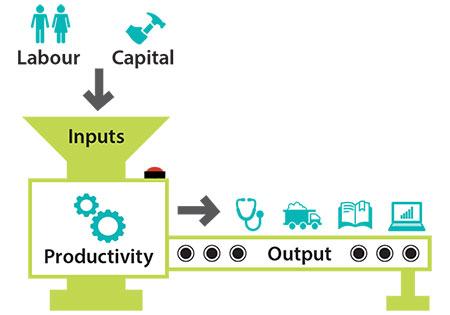How to Increase Employee Productivity: 10 Proven Strategies for Success

In today’s fast-paced business world, employee productivity is crucial for the success of any organization. Productive employees not only contribute to the growth and profitability of a company but also help create a positive work culture. However, increasing employee productivity can be a challenging task for employers and managers. Luckily, there are several proven strategies that can help boost productivity in the workplace. In this article, we will discuss 10 effective strategies to increase employee productivity and improve overall performance.
Introduction
Employee productivity is the cornerstone of a successful business. When employees are productive, they are more engaged, motivated, and efficient in their work. This not only benefits the individual employees but also has a significant impact on the organization as a whole. In this article, we will explore proven strategies for increasing employee productivity and driving success in the workplace.
1. Set Clear Goals and Expectations
One of the most important factors in increasing employee productivity is setting clear goals and expectations. When employees understand what is expected of them and have a clear roadmap for achieving their goals, they are more likely to be motivated and productive. Be specific when outlining goals and provide regular feedback and support to help employees reach their targets.
2. Provide Training and Development Opportunities
Investing in employee training and development is essential for increasing productivity. When employees have the knowledge and skills necessary to perform their job effectively, they are more confident and engaged in their work. Offering training programs, workshops, and opportunities for growth can help employees reach their full potential and contribute more to the organization.
3. Foster a Positive Work Environment
Creating a positive work environment is key to boosting employee productivity. Encourage open communication, collaboration, and teamwork among employees. Recognize and appreciate their efforts and provide opportunities for work-life balance. A happy and healthy work environment can have a significant impact on employee motivation and productivity.
4. Implement Flexible Work Arrangements
Flexible work arrangements, such as remote work options or flexible hours, can increase employee productivity. Allowing employees to work in a way that suits their lifestyle and preferences can lead to improved job satisfaction and performance. Trust your employees to manage their time effectively and give them the autonomy to work in a way that works best for them.
5. Use Technology to Streamline Processes
Technology plays a crucial role in increasing productivity in the workplace. Utilize digital tools and software to streamline processes, automate repetitive tasks, and improve communication among team members. Invest in technology that enhances collaboration, efficiency, and productivity to ensure that your employees have the tools they need to succeed.
6. Encourage Breaks and Time Off
Encouraging employees to take breaks and time off is essential for maintaining productivity and preventing burnout. Breaks allow employees to recharge, refocus, and come back to work with renewed energy and motivation. Encourage employees to take regular breaks throughout the day and utilize their paid time off to rest and rejuvenate.
7. Set Realistic Deadlines and Prioritize Tasks
Setting realistic deadlines and prioritizing tasks can help employees manage their workload more effectively and stay focused on what matters most. Encourage employees to break down large projects into smaller tasks, set achievable deadlines, and prioritize their work based on importance and urgency. This can help prevent overwhelm and ensure that work is completed on time and to a high standard.
8. Provide Regular Feedback and Recognition
Feedback and recognition are powerful motivators for increasing employee productivity. Offer constructive feedback to help employees improve their performance and recognize their hard work and achievements. Celebrate milestones, accomplishments, and successes to show employees that their efforts are valued and appreciated. This can boost morale, engagement, and productivity in the workplace.
9. Encourage Continuous Improvement and Innovation
Encouraging a culture of continuous improvement and innovation can inspire employees to think creatively, take risks, and strive for excellence. Encourage employees to contribute ideas, experiment with new approaches, and seek out opportunities for growth and learning. By fostering a culture of innovation, you can empower employees to challenge themselves, drive change, and achieve greater levels of productivity.
10. Lead by Example
As a leader or manager, it is essential to lead by example and set a positive tone for productivity in the workplace. Demonstrate a strong work ethic, set high standards for performance, and show commitment to achieving goals. Be a role model for your team by embodying the values of hard work, dedication, and professionalism. Your actions and behavior will inspire employees to follow your lead and strive for success.
Conclusion
Increasing employee productivity is a multifaceted process that requires a combination of strategy, support, and communication. By implementing the 10 proven strategies outlined in this article, you can create a more productive and engaged workforce that drives success in your organization. Remember to set clear goals, provide training and development opportunities, foster a positive work environment, and lead by example. By investing in your employees and creating a culture of productivity and excellence, you can achieve long-term success and growth in your business.





Responses